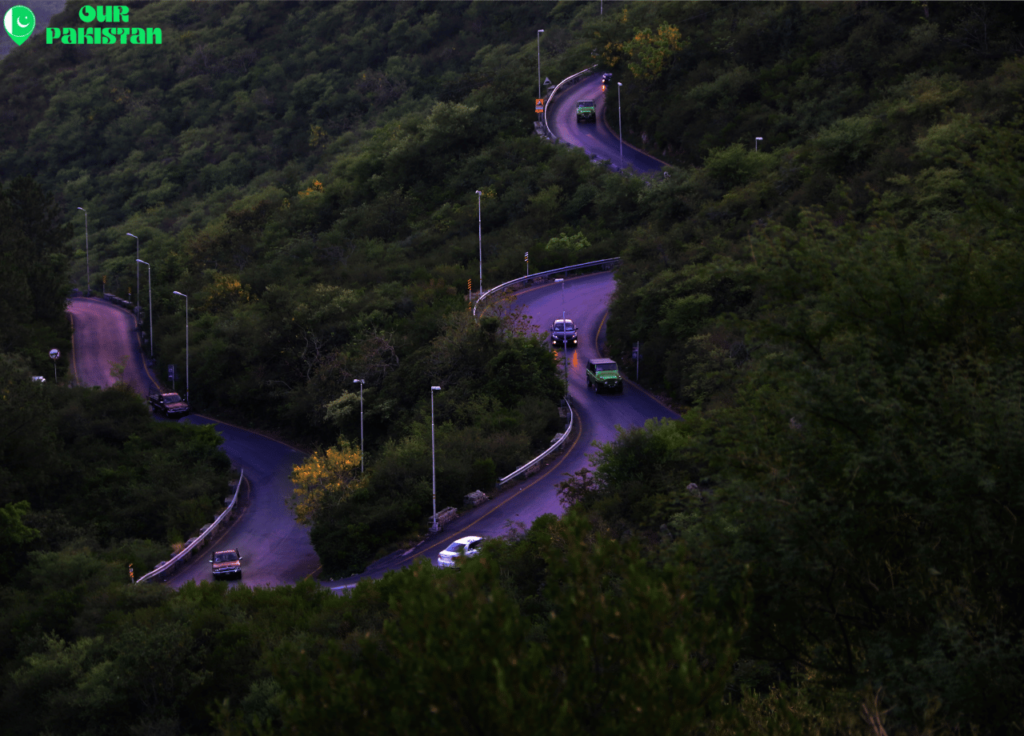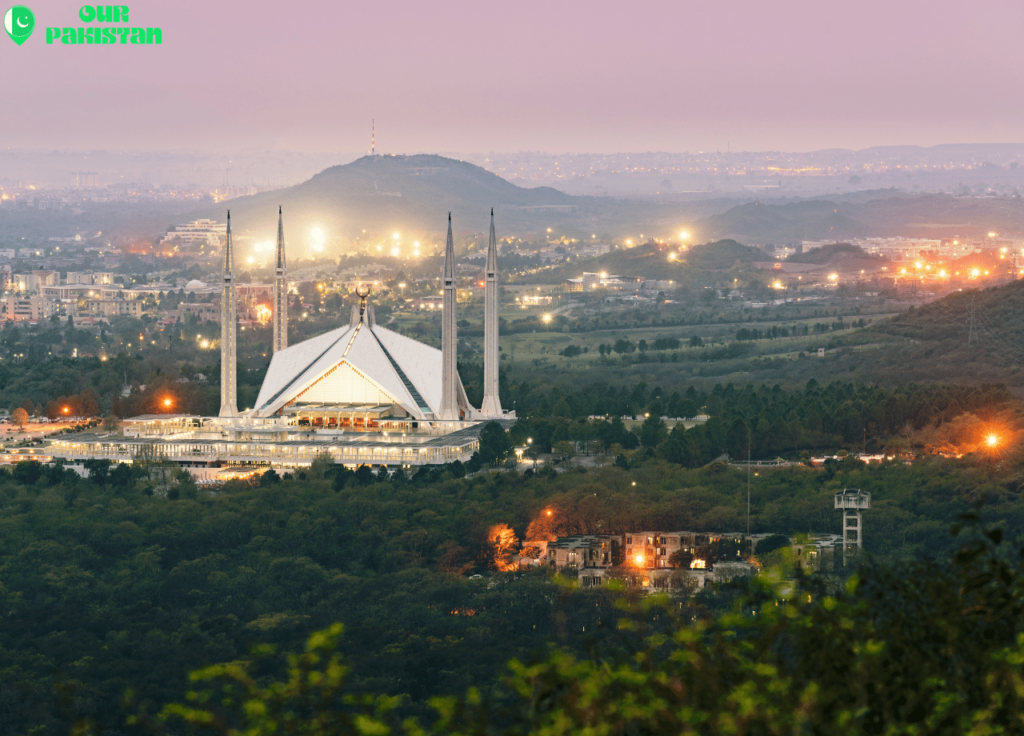Islamabad, the capital of Pakistan, stands as a testament to the rich cultural heritage and forward-thinking vision that defines this nation. Nestled against the backdrop of the picturesque Margalla Hills, this city is a unique blend of historical significance and modern urban planning, making it one of the most fascinating capitals in the world. As a planned city, Islamabad is renowned for its high standards of living, green spaces, and well-organized infrastructure, which significantly contribute to the allure for both residents and visitors. The distinct contrasts between its lush landscapes and the dynamism of its urban centers highlight why Islamabad is not just the political heart of Pakistan but also a central hub for culture, recreation, and education.
This article delves into the myriad aspects of Islamabad, starting from its inception and administration, traversing through its geography and climate, and exploring the rich tapestry of culture and demographics that shape its identity. The discussion will extend to the economy and infrastructure that support the city’s growth, alongside the numerous tourism and attractions that make Islamabad one of the best places to visit in Pakistan. Each section aims to uncover the essence of Islamabad’s allure, from its historical roots in the ancient civilizations that once thrived in this region to the contemporary allure of its planned urban spaces and the natural beauty of its surroundings. Through this comprehensive exploration, readers will gain insight into how Islamabad embodies a city of contrasts and wonders, marrying the ancient with the contemporary in a seamlessly planned urban tapestry.

History and Administration
Early History of Islamabad
Islamabad, located on the Pothohar Plateau, is one of the earliest known sites of human settlement in Asia. Artifacts dating from 100,000 to 500,000 years ago have been discovered here, indicating a long history of human activity. Excavations reveal that Neolithic peoples settled along the Soan River around 5000 BCE, developing small communities by 3000 BCE. The region was later part of the expansive Indus Valley civilization, thriving from the 23rd to the 18th centuries BCE, and saw migrations and invasions from various cultures, including the Aryans and several notable empires.
Development as Capital
The decision to establish Islamabad as the capital was made post-independence, due to Karachi’s vulnerabilities and logistical disadvantages as the initial capital. In 1958, a commission selected the site near Rawalpindi, emphasizing strategic factors like location, climate, and defense. The city’s construction began in the 1960s, designed by the Greek architect Konstantinos Apostolos Doxiadis, featuring a triangular grid plan pointing towards the Margalla Hills. Islamabad officially became the capital in 1967, following a transitional period where the capital was temporarily moved to Rawalpindi.
Current Administrative Setup
Today, Islamabad is managed by the Islamabad Capital Territory (ICT) Administration, also known as the Islamabad Administration, which functions as the main civil and law enforcement body. The local governance is handled by the Islamabad Metropolitan Corporation, supported by the Capital Development Authority (CDA), which oversees city planning, development, and administration. The ICT is divided into various zones including Administrative, Commercial, and Residential, among others, to organize the city’s extensive infrastructure and services.
Geography and Climate
Geographical Features
Islamabad is positioned at the northern edge of the Pothohar Plateau, at the base of the Margalla Hills in the Islamabad Capital Territory. The city’s elevation varies, reaching up to 540 meters, with the highest point, Tilla Charouni, at 1,604 meters. Covering an area of 906 square kilometers, Islamabad extends into a specified area of 2,717 square kilometers, featuring undulating plains and drained by the Kurang River. The presence of three artificial reservoirs, Rawal, Simly, and Khanpur Dams, play a crucial role in regulating the micro-climate of the region.
Seasons and Temperature Variations
Islamabad experiences a humid subtropical climate with distinct seasons. Winters, from November to February, are mild with occasional dense morning fog, while summers are characterized by sweltering heat, particularly from May to August. The hottest month is June, where temperatures often exceed 38°C, and the coldest is January, with temperatures that can drop to freezing point. The monsoon season, crucial for the region’s water supply and agriculture, spans from July to August, bringing heavy rainfall and potential flooding.
Climate Impact on Lifestyle
The changing climate patterns significantly impact the lifestyle and well-being of Islamabad’s residents. Rising temperatures and erratic weather conditions exacerbate health issues like respiratory ailments and heat-related illnesses. The increase in vector-borne diseases such as dengue fever and malaria due to changing precipitation patterns is a growing concern. Additionally, the urban expansion contributes to deteriorating air quality, which affects daily life and heightens health risks. Efforts to preserve green spaces and manage environmental risks are vital for maintaining the city’s livability.

Culture and Demographics
Cultural Heritage
Islamabad’s cultural heritage is deeply rooted in its historical sites, including various archaeological remains and monuments that reflect the rich past of the region. Notably, the area houses around 450 heritage sites identified by a survey from Quaid-i-Azam University. These include the ancient Buddhist and Hindu sites at Shah Allah Ditta village and the diverse array of rock shelters and natural menhirs, such as the Phulgran and Darwala rock shelters.
Languages Spoken
Islamabad is a linguistically diverse city reflecting the multilingual fabric of Pakistan. Urdu serves as the national language and lingua franca, spoken and understood widely across different ethnic groups. English holds co-official status and is prevalent in government and educational sectors. The city’s demographic is linguistically rich with Punjabi being the mother tongue for 54% of the population, followed by significant numbers of Pashto, Balochi, and other language speakers.
Religious Composition
Islam is the predominant religion in Islamabad, practiced by 95.53% of the population. The city also hosts Christian, Hindu, and other religious minorities. Despite being a predominantly Muslim city, Islamabad’s religious landscape is diverse, with historical influences from various faiths including Hinduism, Buddhism, and Zoroastrianism. This diversity is a testament to the city’s historical and cultural complexity, accommodating multiple religious communities over the centuries.

Economy and Infrastructure
Major Industries
Islamabad’s economy is bolstered by diverse sectors including manufacturing, which constitutes 12.52% of the GDP. The textile industry is particularly significant, contributing $15.4 billion to exports and accounting for 56% of total exports. Additionally, the region is rich in minerals such as gypsum, limestone, and copper, with substantial reserves found in the Reko Diq area, estimated to be worth $65 billion.
Infrastructure Development
Recent years have seen substantial infrastructure growth in Islamabad. The construction of the Islamabad Expressway, expanded to accommodate increasing traffic, and the development of the Metro Bus Rapid Transit System, which serves as a crucial component of the city’s public transport system, are notable developments. Furthermore, the Islamabad International Airport, completed in 2018, has replaced the former Benazir Bhutto International Airport, enhancing air connectivity.
Economic Growth
Islamabad has experienced a steady economic growth with an average annual GDP growth rate of 4.0% from 2013 to 2023. The services sector dominates the GDP composition, contributing 58% in 2021, while agriculture accounted for 23%. Despite challenges such as inflation and a fiscal deficit averaging 6.2% of GDP, the city continues to attract investment, evidenced by a GDP per capita growth rate.
Tourism and Attractions
Popular Tourist Spots
Islamabad, recognized as the world’s second most beautiful capital, boasts a variety of iconic landmarks and natural beauties. Key attractions include the Faisal Mosque, the largest in Pakistan and a stunning representation of Islamic architecture, and Daman-e-Koh, offering panoramic views of the city from the Margalla Hills. The Pakistan Monument, symbolizing national unity, and the tranquil Rawal Lake are also significant draws for tourists.
Cultural Festivals
The city’s vibrant cultural scene is highlighted by numerous festivals that celebrate its rich heritage. Events like the Ajoka Theatre’s plays ‘Bulha’ and ‘Dara’ showcase traditional performances that reflect societal themes. The AZADI Festival and various music and food festivals not only entertain but also immerse visitors in the local culture, providing a deep connection to Islamabad’s community and traditions.
Tourist Amenities
To enhance the experience of its visitors, Islamabad offers comprehensive tourist amenities. The Centaurus Mall provides a mix of shopping and dining options, while the Rose & Jasmine Garden and the Japanese Park offer peaceful retreats amidst the city’s hustle. For those interested in history and science, the Lok Virsa Museum and the Pakistan Museum of Natural History present extensive collections that explore the region’s diverse cultural and natural history.
Conclusion
Through an extensive journey from its foundations to its current status as a beacon of cultural diversity and modern urban planning, Islamabad showcases its distinct identity as a city of contrasts and wonders. From the ancient settlements evident in its early history to the meticulously planned sectors that define its present, Islamabad embodies a blend of traditions and innovations. The city’s geography, climate, and natural beauty contribute profoundly to its character, influencing both lifestyle and economic activities, while its cultural and demographic diversity enriches every facet of life within its bounds.
The exploration of Islamabad’s economy, infrastructure, and the vibrant tourism sector reveals a city that is not only strategically significant but also a place of great beauty and historical depth. Efforts to balance growth with environmental sustainability and cultural preservation underscore the challenges and opportunities Islamabad faces in the 21st century. As we consider the city’s journey, it becomes clear that Islamabad is more than just a capital; it is a microcosm of Pakistan’s evolution, offering lessons and inspirations for cities worldwide. Reflecting on Islamabad’s multifaceted narrative, we are reminded of the resilience and dynamic spirit that define this city, inviting further exploration and appreciation from both residents and visitors alike.
FAQs
Islamabad is distinguished for its harmonious blend of modern architecture and breathtaking natural landscapes. Noteworthy sites include the iconic Faisal Mosque, the Pakistan Monument, Shakarparian Park, and Rawal Lake, making it a city where history and modernity coexist beautifully.
Before it was named Islamabad, the capital of Pakistan was part of the Potohar Region. This area was known for its historical significance and diverse culture before being renamed and designated as the capital.
Islamabad is recognized as the second most beautiful capital city in the world. This small yet captivating city is celebrated for its lush greenery, proximity to the Margalla Hills, and its overall peaceful and natural setting, which contribute to its aesthetic appeal.
In the 1960s, Islamabad was strategically developed as a new capital to replace Karachi, primarily because of its geographical centrality. Karachi, being at the southern edge of the country, was vulnerable to maritime attacks. Islamabad’s location made it more secure and accessible from various parts of Pakistan, facilitating better national integration and administration.